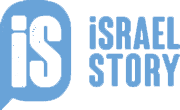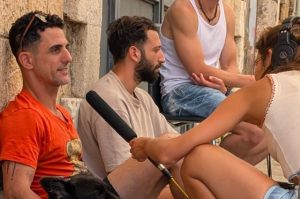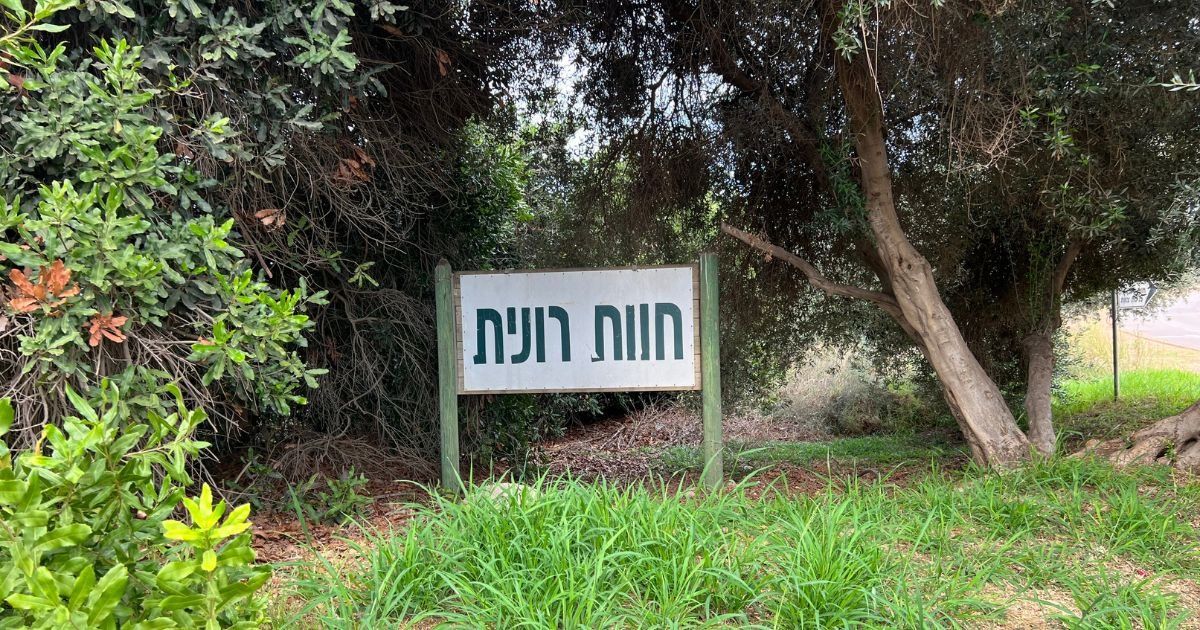Now, however, it’s been converted into an emotional emergency room. With all of its different stations and activities it kind of feels like a summer camp for adults. Except that all the campers are survivors of the Nova party in Re’im. Our producers Alexandra Moller and Adina Karpuj visited Havat Ronit, and began by talking to Lia Naor who created and directs this unusual healing space.
Lia Naor: Okay, we’re good. Here. I’m sorry it’s like this but the war is not only on the borders, it’s happening right here as we talk.
Adina Karpuj: Can you start by introducing yourself.
Lia Naor: Yes, Dr. Lea Naor. I have a PhD in human development and counseling. I’m a social worker, and nature based therapist, and I research positive transformation.
Adina Karpuj: And tell me where we are and how this all started.
Lia Naor: Okay. So we’re in Havat Ronit. And this whole project started on the 8th of October. I just realized there was nothing for the survivors of the party. And I called a friend, Ra’anan Arizon, and I said: “What are you doing?” And he said: “Playing with my grandchildren.” And I said: “Can you get your area ready for the survivors?” And he said: “Yes.” And we just made calls, and I sent things on Facebook, and the next morning we opened healing space.
The people that started coming were very, very fragmented and very broken and frozen, and their eyes were hollow…they were like walking dead. There’s one guy who went to the festival to celebrate his birthday—there were 30 of them: 28 of his friends were murdered, and his last friend committed suicide a week and a half ago. And he comes here every day, and we hug him a lot.
And we couldn’t do anything verbal, so we brought a football, and then somebody came with a guitar, and then somebody came to do body work. And it was very, very apparent that what these people need, and what everybody needs—we’re 9 million people in trauma.
We know that health is not only the reduce of symptoms, but health is a holistic perspective, and we have body and soul and mind and spirit. So if we want to heal people, we need to have all those different aspects, okay. And in this place we’re offering healing and all the different ways that a person needs to be healed. We’re like a triage: like an emotional ER.
So we now have about 450 volunteers: psychologists, psychiatrists, social workers, trauma response, SC reflexologists, herbalists—an amazing, amazing, amazing group of people that have stopped their lives for the past month. And we’ve seen almost 3500 people until today. And we also have groups for the parents. And we also have groups for the parents of the ones that are not with us anymore.
And you see before your eyes…people that have chosen to come back to life. For a lot of them this is the reason they get up in the morning. They say that here they could eat the first time; they could sleep for the first time. Here they can smile and be happy. So we have them dancing, we have them doing music. Yesterday we had a Wim Hof cold bath. We have them doing boxing; we have them doing yoga therapy. There’s endless workshops going on all the time, while also offering group therapy and one-on-one individual therapy.
But they have the agency. In trauma people feel helpless. And what we wanted to do—and this is what is also special about what we’re doing—it’s having people take responsibility for their healing process. So they decide what they need every day.
And we know that for most of the people that come here, these are not people that would call the hotline or go to a psychologist in a different way. And I think that’s right for a lot of the police that will come here in the future, and for the soldiers that will come here for the future.
The main thing everybody says is there’s so many good eyes: soft, good eyes.
And after a month, we opened a training for them—of how to be life supporters. So first they’re learning how to support themselves in life, and then how to support others, so that they can be active in their healing, but also in feeling meaningful.
You can walk out here you’ll see people dancing, and people singing, and people that are going back to work. They’re alive…that this area brought them back to life. We don’t have answers for everything, but there’s a place to come to be held, and loved, and treated, and healed with others that feel like you and need that. And people that believe in you, and warm food, and beautiful nature. And that’s what I can do.
Adina Karpuj: Go around a little bit like outside. There’s a spread and a sound healing space, lots of cushions on the floor…they have beads and pipe cleaners.
Roni Katzman: So I’m Roni Katzman, and I’m a dot artist. And I’m doing a freestyle workshop. I give them to dot on stones.
Adina Karpuj: Is this something…like a technique you’ve created since being here?
Roni Katzman: No, no, it’s a trend…this art of dotting it’s a trend by the last few years I would say. And also dotting on stones to make a power stone for themselves. I call it a power stone because I want it to be somewhere in their home that when they come in contact with…they feel like everything is all right now.
Most of the people that come they not immediately start talking with me, but when I offer them what to do some of them can say: “Well, I want to make stone to my friend who murdered, or to my mom.”
Alexandra Moller: I see there are dots of different sizes, and they’re all different colors…inside are different animals. Have you noticed an animal or two that have been especially popular?
Roni Katzman: Most of them go towards a butterfly or a bird?
Adina Karpuj: Interesting, something that can fly away versus…
Roni Katzman: And also it have a short term: butterfly, for example…yeah. If they choose words, so most of the words will be: thank you; thank you for life; thank you mom that you brought me here.
They feel honored to stay alive. Because they had luck. Yeah.
Adina Karpuj: ( In Hebrew) Hi, can I interview you for a few minutes?
I’ll ask you to introduce yourself.
Nadav: My name is Nadav. I work here…I volunteer here doing physical therapy or body therapy. So, after going through a traumatic event, a lot of the trauma is still held in the body: anxiety; panic; stress; cramped muscles; pain; lack of sensations in the body; lack of trust in the body.
A lot of mental activity—we tend to dissociate from the body in many ways. So when we’re talking about grounding, it’s coming back to the body, to the immediate sensations.
We try to help them release, I guess, release some of the pain and the trauma. And the first…I’ll say two or three weeks were very challenging in all aspects of life: sleep and hunger and mood. So it’s been very, very stormy on the inside.
I’m coping with PTSD for many years, and in the beginning I said: okay, I really need to take care of myself, to be less exposed to them, to the immediate trauma. So I had a lot of contemplation whether I should come and do it or not, and see how much I can be present with the people and still not to get dragged into their stories. And I said: I’ll give it a try, see how it’s like. I’m managing to hold it, to hold it all together.
I’ve been playing music here as well, and just the other day somebody who was…we were sitting and playing, and then the guy just started crying there. And he said: “You know, I haven’t been able to hear music for two weeks.” And suddenly something kind of opened up and he allowed himself to listen to music and stuff came out.
For me it’s very therapeutic, and very healing because I feel like my sense of my tank, my capacity to hold everything: to hold the emotions, to hold the whole experience is much larger than it has been before, and it’s very surprising for me to see that I can, I can cope with it and still feel on top of things from most of the time. I still feel like I’m not falling into pieces, or falling to pieces and collect myself, you know, shortly after. Through healing others I’m healing myself.




